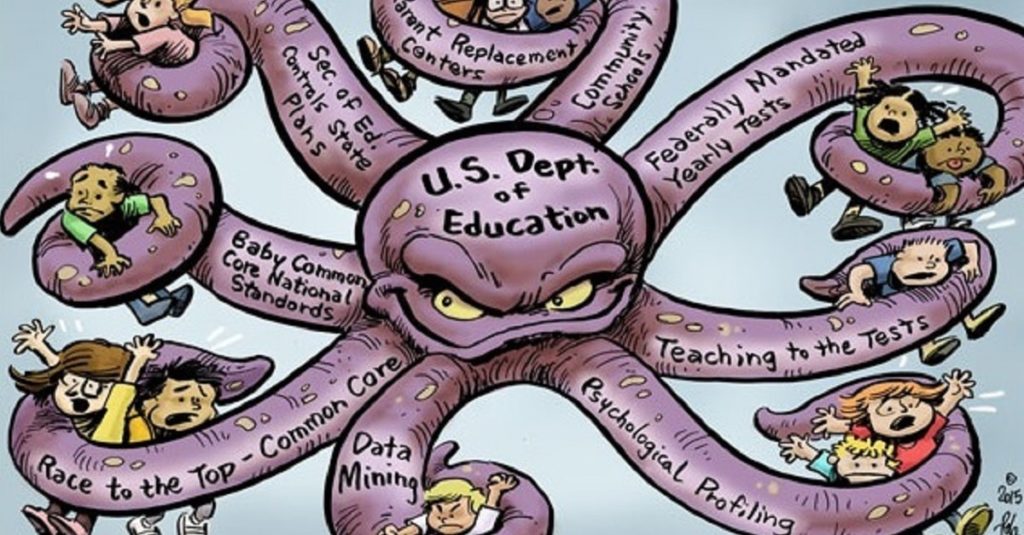New Report: 50 Years of ‘Fed Ed’ Has Failed to Close Achievement Gap
This article written by Dr. Karen Effrem for The National Pulse details the failings of the U.S. federal education system to raise the academic performance for underprivileged students.
A History of Fed Ed: From ESEA to Common Core
That federal interference started with the Elementary and Secondary Education Act (ESEA), which began compensatory grants for poor children in K-12, and Head Start, the federal preschool program, both passed in 1965. Both laws, plus the General Education Provisions Act (GEPA), started out relatively benignly with all sorts of comforting language about how the federal government was not going to interfere in local autonomy regarding curriculum, etc.
However, both federal education laws have gradually increased the iron grip of federal control over states and school districts over the last fifty years. These three statutory provisions protecting local control have essentially been ignored.
First, the feds imposed statewide standards and tests on states as a prerequisite for federal funds in the 1994 reauthorization of ESEA, called the Improving America’s Schools Act. Not only did they take away school district autonomy in choosing standards and tests, but they also required those standards to comply with the federal Goals 2000 standards. Goals 2000 was an intensification of federal control of both state and federal pre-K programs that had to comply with Head Start — and also marked the first time that “social emotional learning” appeared in the federal education lexicon.
Then came the 2001 version of ESEA, called the No Child Left Behind Act (NCLB). It ratcheted up federal control even more by requiring statewide tests in math and English/reading every year in grades 3-8 and science once in elementary, middle, and high school. SEL and preschool elements from the 1994 bill also survived in the new version. However, the worst part of NCLB was the completely unrealistic 100-percent proficiency requirement in math and English by 2014 for every subgroup under the threat of districts losing federal funding.
Years later, the Obama administration then used that threat plus the Great Recession to bribe/coerce states into adopting Common Core via illegal waivers and the Race to the Top grant program, all well explained in the white paper by Robert Eitel and Kent Talbert: “The Road to a National Curriculum — The Legal Aspects of the Common Core Standards, Race to the Top, and Conditional Waivers.”
The rest of the article can be viewed on The National Pulse’s website.
Issues
- Assessments + Testing (25)
- Bullying/Sex Education (6)
- Child Protection League (2)
- Common Core Standards (78)
- Curriculum + Standards (65)
- Data Collection and Data Privacy (64)
- Early Education/Nanny State (75)
- Federal Education (128)
- International Education (6)
- LGBT Issues in Education (9)
- Media Appearances (4)
- PL/CBE (2)
- Planned Economy (11)
- Politics of Education (26)
- School Violence (9)
- Social Emotional Learning/Mental Health (52)
- State Education (89)
- Testimony/Presentations (17)
- Uncategorized (13)
- Unions (10)
Education Liberty Watch Projects
ELW Allies
- American Principles Project
- Cato Institute
- Conservative Teachers of America
- Constitutional Coalition
- Eagle Forum
- Minnesota Advocates and Champions for Children
- Missouri Education Watchdog
- Restore Oklahoma Parent Empowerment
- Stop Common Core
- The Pioneer Institute
- Truth in American Education
- What is Common Core – Education Without Representation




